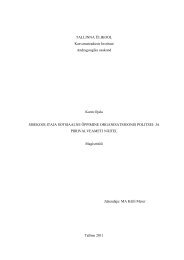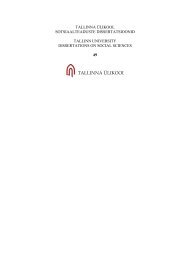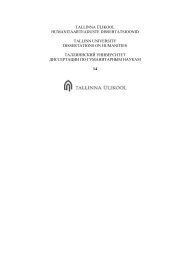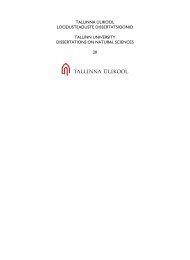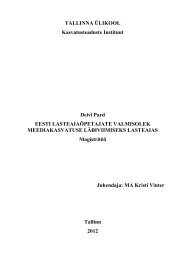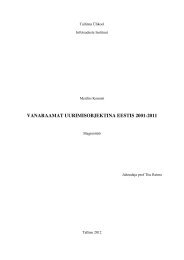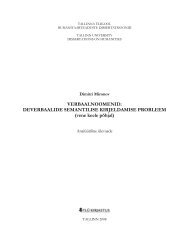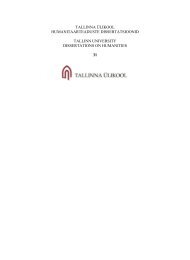Download (1157Kb) - E-Ait
Download (1157Kb) - E-Ait
Download (1157Kb) - E-Ait
You also want an ePaper? Increase the reach of your titles
YUMPU automatically turns print PDFs into web optimized ePapers that Google loves.
3.2. Methodology.<br />
This is survey research whereby a sample is studied to draw conclusions about the<br />
population. The choice of survey research is a consequence of inability to study the whole<br />
population due to time and limited resources. It seeks to establish the relationships between<br />
knowledge sharing and intellectual capital without experimental manipulation. The research<br />
is intended to be an explanatory survey. Burns states that the explanatory survey seeks to<br />
establish cause and effect relationships but without experimental manipulation; for example,<br />
the effects on teacher‟s motivation of merit scheme, the effect of social climate on adolescent<br />
values (Burns, 2000, p.566).<br />
3.3. Research design.<br />
This research is intended to employ both qualitative and quantitative methods. Largely the<br />
research will use qualitative methods to collect descriptive and detailed data. The qualitative<br />
method will be characterised by open ended questions to give respondents more space to air<br />
out their view. To make it possible to generalise the results of the findings, the research at<br />
some point will employ some quantitative techniques such as the use of statistics, comparison<br />
based on some kind of scales and percentages. To clarify some issues charts with statistics<br />
and interpretations will also be used if appropriate.<br />
3.4. Area of study.<br />
This research focuses on intellectual capital see chapter one for the choice of the topic.<br />
Specifically the research focuses attention to Public University libraries of Tanzania. The<br />
research studies public university libraries and is limited to aspects of intellectual capital<br />
pertaining to knowledge sharing.<br />
3.5. The population.<br />
The population of the study involves respondents coming from 6 Public University libraries<br />
found in Tanzania mainland. The state University of Zanzibar, Muhimbili University College<br />
of Health Science (MUHAS) and University College of Lands and Architecture Studies<br />
(UCLAS) were not covered due to time. The research studies the University of Dar es salaam<br />
where MUHAS and UCLAS are attached. The population however will be library staff from<br />
various departments attached to these libraries. From the list of library staff shown on these<br />
30





